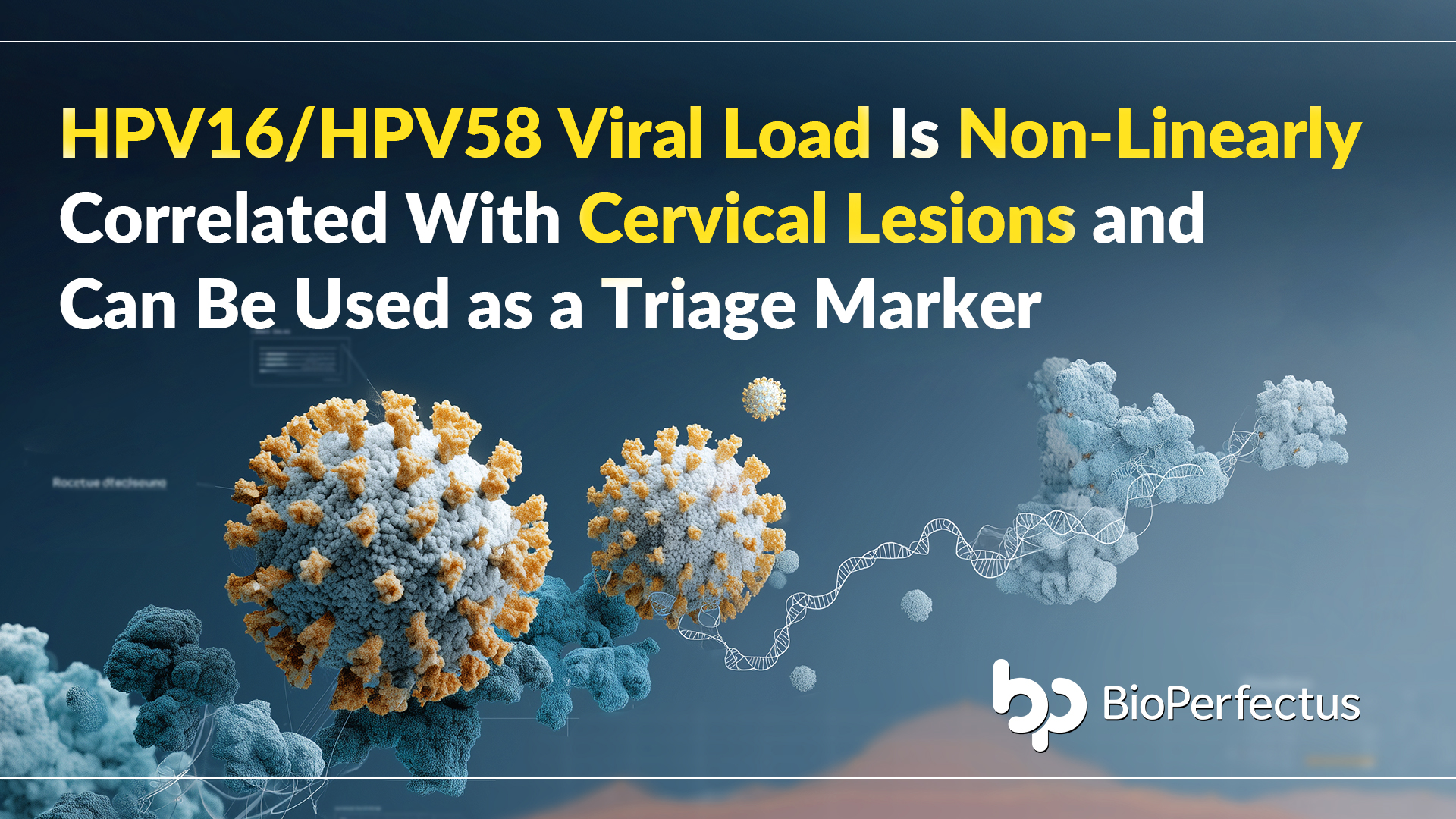
The significance of viral load from high-risk human papillomavirus (HR-HPV) in the detection of cervical lesions is still debated. Recently, Professor Hongbo Hu’s team from Yuebei People’s Hospital published a retrospective study in Infectious Agents and Cancer (IF: 2.8). This study aims to assess the correlation between the viral load of the most common high-risk genotypes (HPV16, HPV18, HPV52, HPV53, HPV58, and HPV68) and cervical lesions in South China, and to ascertain the role of specific HPV viral load types as potential diagnostic biomarkers for cervical lesions.

Conclusion
This retrospective study showed that HPV 16/18/52/58 viral load is a risk factor for the development of cervical lesions, and that HPV16 and HPV58 showed a non-linear relationship with the development of CIN1+ and CIN2+ cervical lesions, respectively. positive women in post-screening clinical management.
Methods
This study retrospectively analyzed the data of patients who underwent HPV viral load testing and had pathological results at Yuebei People’s Hospital from 2019 to 2023. Six of the most common HPV infection types (HPV16/18/52/53/58/68) were selected for the study, and a total of 1,787 patients were included.
To avoid the influence of HPV16/18 on other high-risk types, in subtyping analysis we excluded those with combined HPV16/18 patients. HPV genotyping and viral load were detected using real-time fluorescence quantitative PCR, and their correlation with cervical lesions was explored through linear and nonlinear analytical methods.

Results
A total of 1787 positive patients were included in this study. Among them, 1002 had inflammation, 461 were diagnosed with CIN1, 248 with CIN2-3, and 76 were diagnosed with cancer. In the different pathological groupings (Normal, CIN1, CIN2-3 and Cancer), there were distributional differences in median age, percentage of multiple infections and co-infections 16/18, which were statistically significant (p < 0.05). In subtyping analysis, there were statistically significant differences in viral loads among subgroups for HPV16, HPV18, HPV52, HPV58, HPV68 and the total population, whereas no significant differences were seen for HPV53 (Table 1).

In the CIN1 + vs. Normal group, the risk of CIN1 + in cases of multiple infections increased by 37% compared to the normal group (P < 0.05). For different types of viral loads, an increase of one log unit resulted in an increased risk of CIN1 + by 55%, 47%, 31%, 37%, 49%, and 39% for HPV16, HPV18, HPV52, HPV58, HPV68, and the overall population respectively, all statistically significant (P < 0.05). In the CIN2+ vs. < CIN2 group, age increased the risk of CIN2 + compared to < CIN2. For every log unit increment in viral load, a significant rise in the risk of CIN2 + was observed only in the HPV16, HPV18, and HPV58 groups, as well as the aggregate population (P < 0.05), with increases of 73%, 60%, 76%, and 43% respectively. The risk changes for HPV52, HPV53, and HPV68 were not statistically significant (Table 2).

After adjusting for factors such as age and multiple infections, in the CIN1 + vs. Normal group, compared to the normal group, HPV16, HPV18, HPV52, HPV58, HPV68, and the total viral load remain independent risk factors for the occurrence of CIN1+, with the risks increasing by 58%, 56%, 32%, 40%, 49%, and 41% respectively. Within the CIN2 + vs. < CIN2 category, relative to < CIN2, the risk of CIN2 + notably rose by 77%, 59%, 76%, and 47% for HPV16, HPV18, HPV58, and the total viral load respectively (Table 3).

Through curve analysis to find the threshold value of viral load (Fig. 2), in the CIN1 + vs. Normal group, HPV16 viral load shows a nonlinear relationship with CIN1+, with a cutoff value of 3.62. After the viral load log value exceeds 3.62, the risk of CIN1 + significantly increases by 1.17 times (Table 4). This is not entirely consistent in single/multiple infection populations, with a cutoff value of 3.63 in the single infection population and 1.89 in the multiple infection population. After the log exceeds the cutoff value, each increase in log value results in a 1.28-fold and 53% increase in the risk of CIN1+, respectively .
In the CIN2+ vs. < CIN2 group, there is a nonlinear relationship between HPV58 viral load and cervical lesions, with a cutoff value of 4.29. When the viral load log value reaches 4.29, the risk of CIN2+ no longer increases with an increase in viral load (Table 5). The cutoff value in the single infection population is 4.33, and due to the small number of cases, the risk value before the cutoff cannot be calculated in the multiple infection population .



The value of this study lies in its focus on the six most common high-risk HPV types in southern China and used pathological results as the evaluation standard, to evaluate the correlation between particular viral loads and cervical lesions. In this study, we found a non-linear relationship between the viral loads of HPV16/HPV58 in CIN1 + and CIN2+, respectively, and identified corresponding thresholds and effect values through plotting. It is highly valuable for the clinical differentiation of high-grade lesion risk in HR-HPV positive women.
Reference: Zhou J, Ma B, Ji J, Liao J, Xu H, Hu H. HPV16/HPV58 viral load is non-linearly correlated with cervical lesions and can be used as a triage marker. Infect Agent Cancer. 2025;20(1):48. Published 2025 Jul 22.

